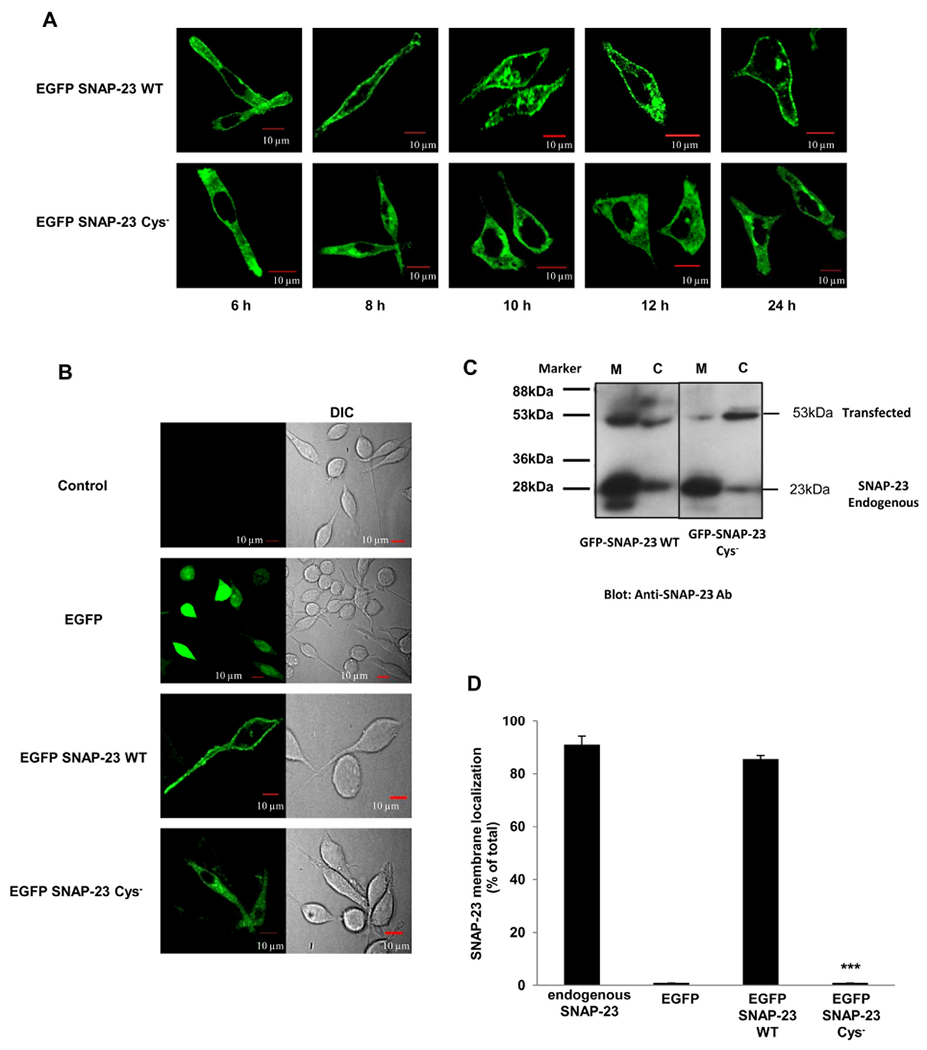Fig. 2.

SNAP-23 Cys− mutant fails to traffic to the plasma membrane and remains stuck in the cytosol of RBL mast cells. A. RBL cells were transfected with EGFP-tagged SNAP-23 WT and SNAP-23 Cys− mutant. Transfected cells were plated on coverslips and analyzed by confocal microscopy after 6, 8, 10, 12 and 24 h post-transfection. Shown here are representative images. Scale = 10 μm. B. RBL cells were either mock transfected (control) or transfected with EGFPC2 vector, EGFP-tagged SNAP-23 WT or SNAP-23 Cys− mutant. The cells were analyzed by confocal microscopy after 24 h of transfection. Shown here are representative images. Scale = 10 μm. C. Transfected cells were also analyzed by membrane/cytosol enrichment analysis followed by immunoblotting with anti-SNAP-23 c-terminus or anti-GFP antibody. The representative immunoblots are shown here along with the molecular weight markers. The image is of a single blot having membrane/cytosol enrichment analysis for both SNAP-23 WT and Cys− mutant transfected cells. The black line in between the lanes represents an empty lane. EGFP and endogenous SNAP-23 served as cytosolic and membrane marker proteins respectively. D. Band intensities from three independent experiments were quantified by densitometry and expressed as percentage of SNAP-23 membrane localization with respect to total SNAP-23 (mean ± SEM). *** indicate that displacement of SNAP-23 Cys− mutant from the membrane is statistically significant as compared to membrane association of wild-type SNAP-23 (p < 0.0005).
